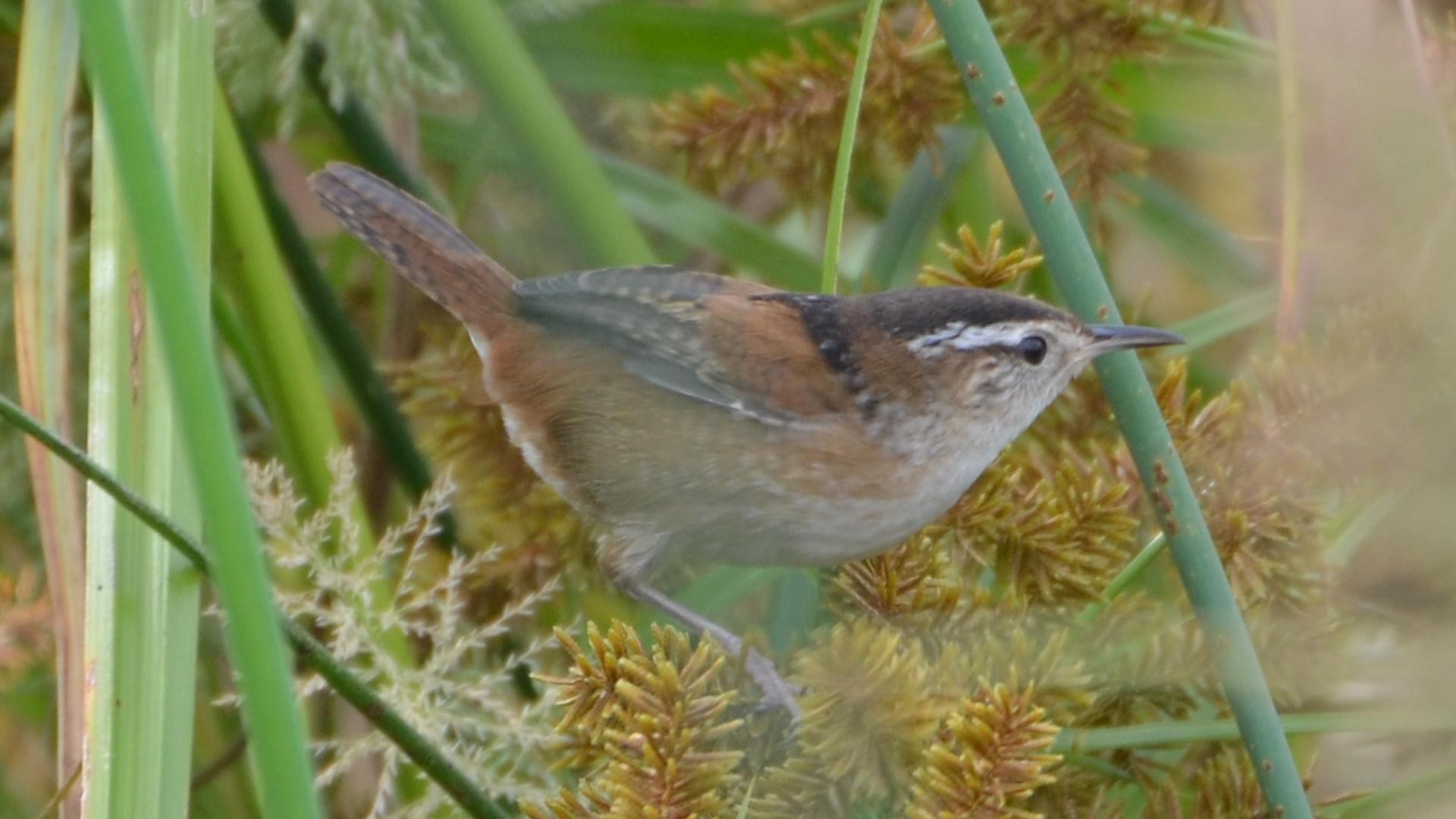Marsh Wren
A species of Marsh and Sedge Wrens and Allies, Also known as Cattail Wren Scientific name : Cistothorus palustris Genus : Marsh and Sedge Wrens and Allies
Marsh Wren, A species of Marsh and Sedge Wrens and Allies
Also known as:
Cattail Wren
Botanical name: Cistothorus palustris
Genus: Marsh and Sedge Wrens and Allies
Content
Description People often ask General Info
 Photo By Andy Reago & Chrissy McClarren , used under CC-BY-2.0 /Cropped and compressed from original
Photo By Andy Reago & Chrissy McClarren , used under CC-BY-2.0 /Cropped and compressed from original Description
Adults have brown upperparts with a light brown belly and flanks and a white throat and breast. The back is black with white stripes. They have a dark cap with a white line over the eyes and a short thin bill. The male's song is a loud gurgle used to declare ownership of territory; western males have a more varied repertoire. This little bird is native to Canada, Mexico, and the United States. Their breeding habitat is marshes with tall vegetation such as cattails across North America. In the western United States, some birds are permanent residents. Other birds migrate to marshes and salt marshes in the southern United States and Mexico. their non-breeding range is in the southern United States going into Mexico and their breeding range is in the northeastern United States going into Canada. Measurements: Length: 3.9-5.5 in (10-14 cm) Weight: 0.3-0.5 oz (9-14 g) Wingspan: 5.9 in (15 cm) 
Size
11-13 cm (4.5-5 in)
Colors
Brown
Black
Gray
White
Life Expectancy
9 years
Nest Placement
Shrub
Clutch Size
3 - 10 eggs
Incubation Period
1 - 2 broods
Number of Broods
12 - 16 days
Nestling Period
13 - 15 days
Feeding Habits
Marsh Wren predominantly consume insects, including bugs (29%), caterpillars (17%), and beetles (16%), as well as spiders and snails. They forage in marsh vegetation near water, occasionally catching insects mid-flight, with a notable increase in ants and wasps consumption during the fall.
Habitat
Marsh Wren are predominantly found in wetland habitats, including both freshwater and brackish marshes rich with cattails, bulrushes, sedges, and Phragmites. They favor environments with dense vegetation for nesting and feeding. These birds thrive at low altitudes and in regions with a temperate climate. In winter, they can also be found in brushy thickets near wetlands, as well as along agricultural canals with abundant weeds.
Nest Behavior
Males of marsh Wren build multiple nests within their territories during breeding season. The females select and line one with grass, sedge, cattail down, feathers, and rootlets.
Nest Characteristics
Marsh Wren's nest is oblong and dome-shaped, made of cattail, sedges, and grasses, featuring a top entry hole with an enclosed cup at the bottom, measuring approximately 7 inches tall and 5 inches wide. It is uniquely located 2–5 feet above ground in cattails and bulrushes.
Dite type
Insectivorous
People often ask
General Info
Feeding Habits
Bird food type
Sounds
Call
Recording location: United States
Call
Recording location: United States
Song
Recording location: United States
Song
Recording location: United States
Behavior
Marsh Wren exhibit distinctive behaviors, notably their unique movement as they navigate the dense wetland reeds often utilizing different stalks to balance. Daily activities consist largely of singing complex, buzzy trills, with males being particularly vocal during the breeding season, sometimes performing weak, fluttering flights above the marshland. Marsh Wren show strong site fidelity, returning to established territories each year. Males exhibit polygynous behavior, constructing multiple nests to entice females, using elaborate displays of tail-cocking, bowing, and singing. Post-pairing, marsh Wren fiercely defend their territory, even resorting to sabotaging the reproductive success of conspecifics and competitors to secure resources.
Species Status
This bird is still common with an estimated global breeding population of 9.4 million. That being said, its numbers have declined with the loss of suitable wetland habitat and wholesale draining of marshes will lead to local extinction. Still, this species is widespread enough not to qualify as threatened according to the IUCN. 

 Photo By Andy Reago & Chrissy McClarren , used under CC-BY-2.0 /Cropped and compressed from original
Photo By Andy Reago & Chrissy McClarren , used under CC-BY-2.0 /Cropped and compressed from original